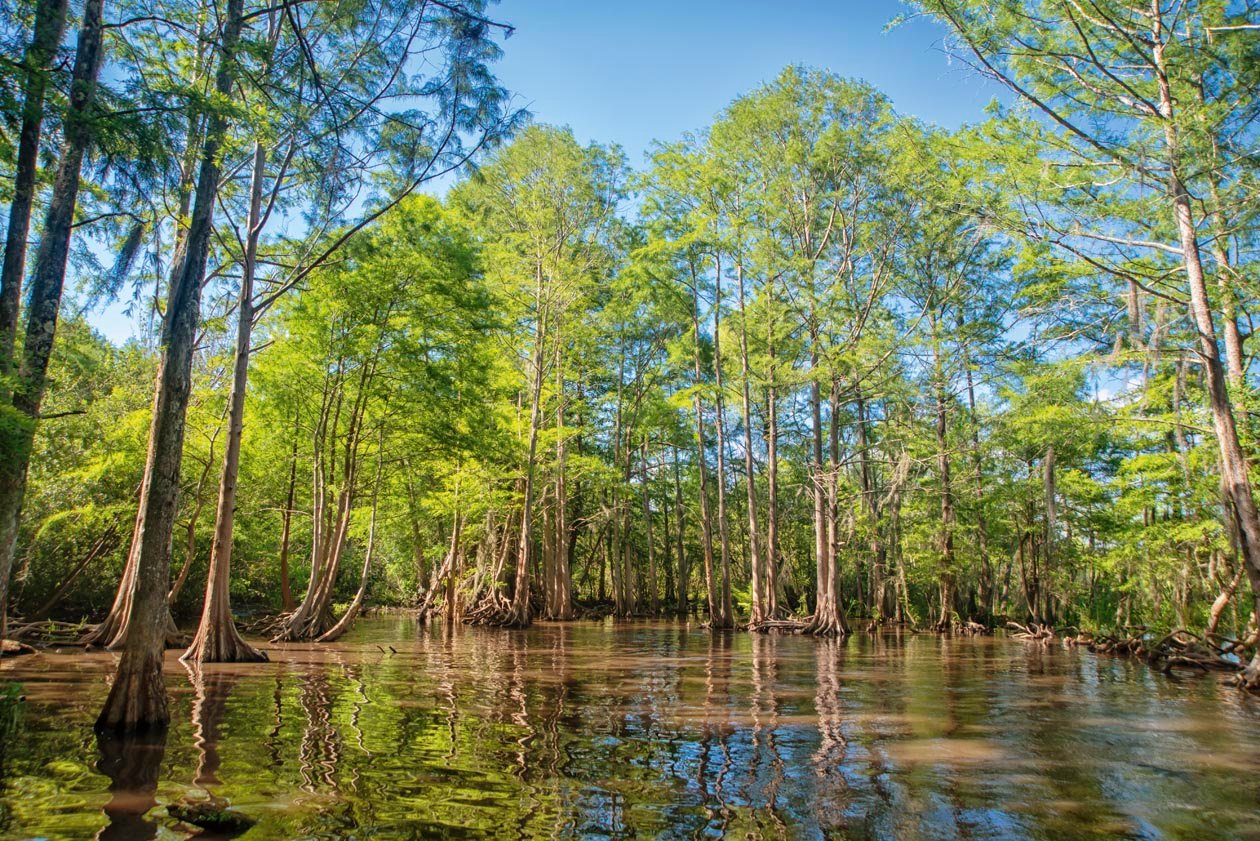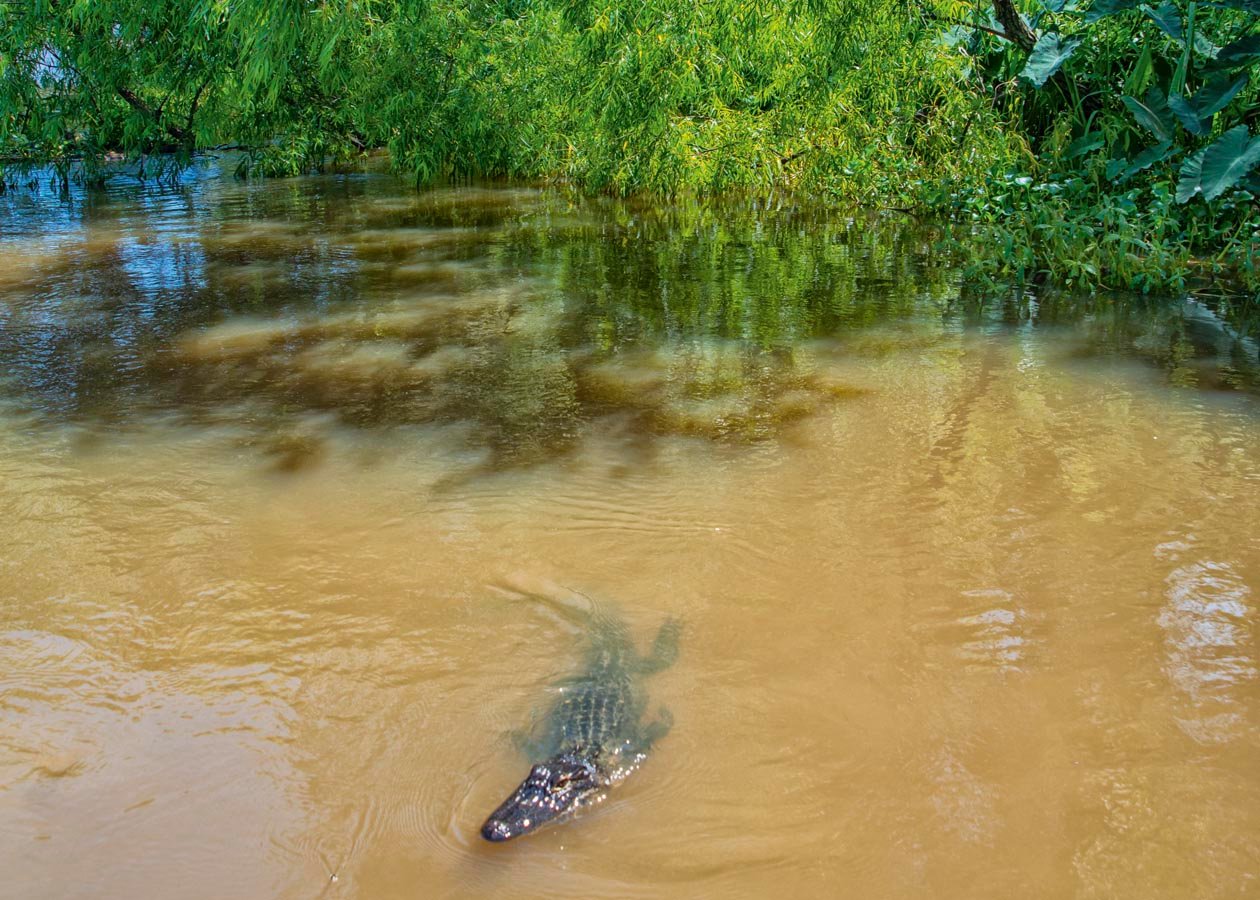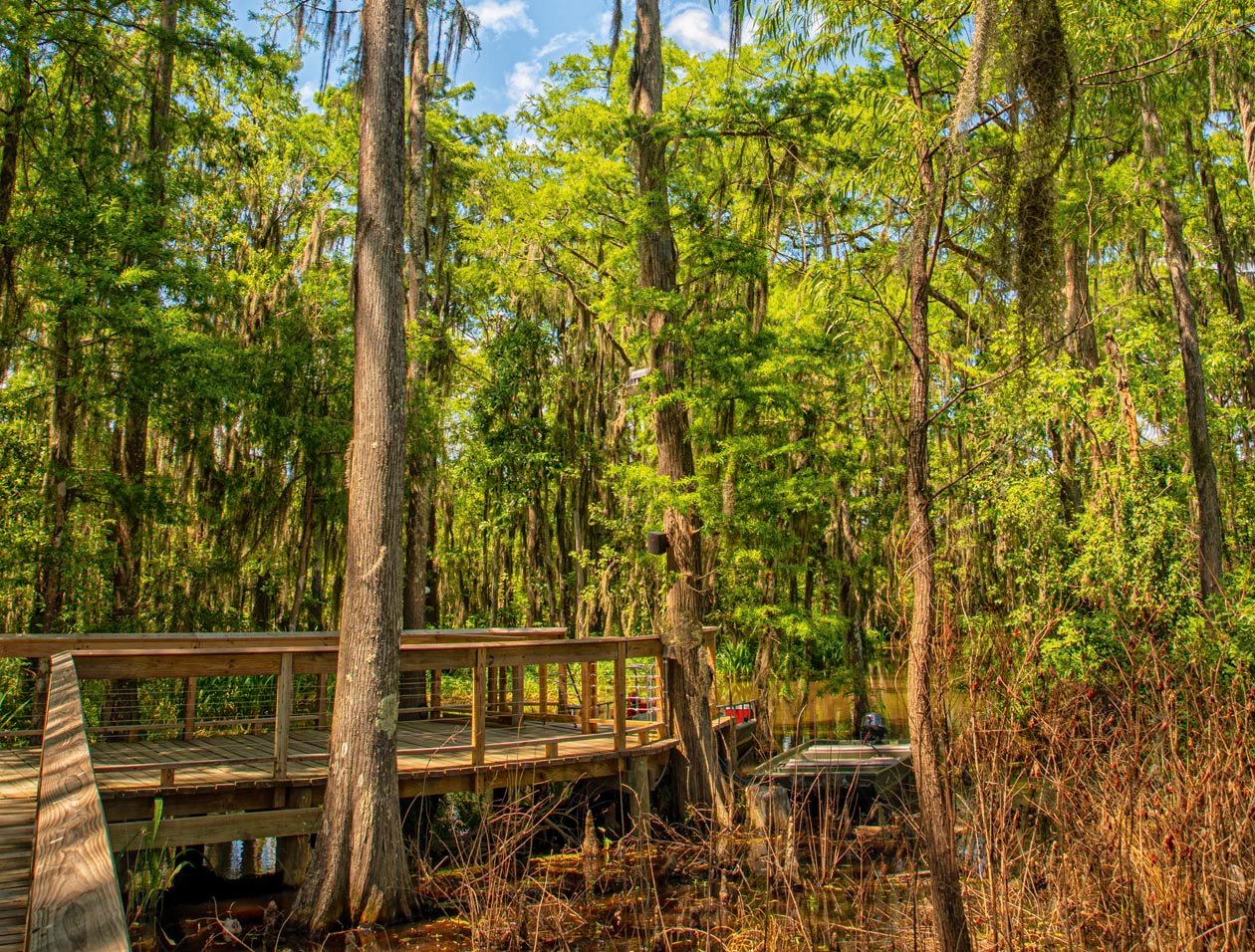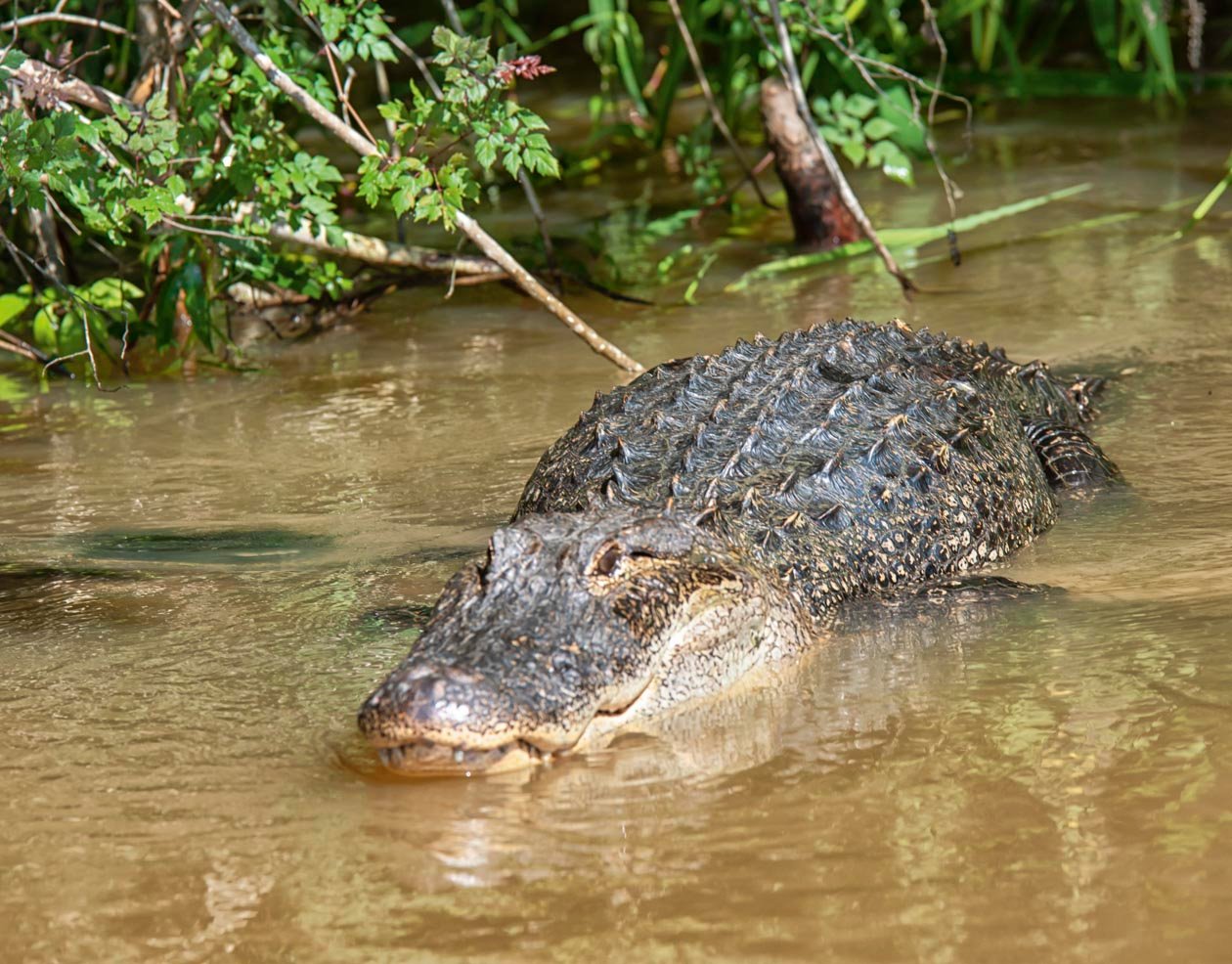
Through the Swamps of Louisiana
Text and photos: Javier Pinzón
Louisiana’s culture is deeply rooted in its swamplands and wetlands. It makes sense: the state contains nearly 2.5 million flooded acres. These swamps represent an extremely important ecosystem for Cajuns and Native Americans, who have lived in harmony with these lands for centuries. However, their experience was not enough to prevent a debacle. For many years, the swamps were drained in order to provide additional land for agriculture. Many swamps have also undergone extensive logging, which requires the construction of ditches and drainage canals. Coastal drainage allowed salt water to enter the land, converting swamps into salt marshes or even open water.
Currently, we are touring one of Louisiana’s swamps to see first hand everything we have read about these special places. I call them special, not only for the valuable ecological services they provide, which include flood control, water filtration, carbon storage, and fish and wildlife habitat, but also for being places of contemplation, eliciting a range of emotions thanks to the animals and plants that live there.

A swamp consists of low-lying land, normally saturated or covered with water, where trees and aquatic vegetation grow. They exist almost everywhere in the world with the exception of Antarctica and are usually located in low areas, near or connected to rivers or lakes that provide them with water. There are “true” swamps, or swampy forests, and “transitional” forests, or bush swamps. They can be freshwater or salt water, the latter usually found along the tropical coastal areas.
While we meander along the canals in search of alligators, the guide explains that these swamps, along with the coastal wetlands, intersect with longleaf pine savannahs that support many rare and unusual species. The swamps, together with the wetlands, house a great variety of trees, such as the Bald Cypress, tupelo, and poplar. Other plants, such as the dwarf palm, wax myrtle, and submerged aquatic plants, such as Vallisneria and Ruppia, are native to Louisiana’s wetlands. The plants in these places act as natural filters and help remove heavy metals, waste, and pesticides from contaminated water before it reaches the Gulf of Mexico. Animals live here too, including native species such as osprey, but also ibis, herons, manatees, alligators, land turtles, and beavers.

The economic value of the swamps is incalculable. Commercial fishing alone represents more than 300 million dollars for the state’s economy. More than 70% of this amount comes from shrimp, oysters, and blue crabs, which use the coastal wetlands as a nursery for their young. Annually, Louisiana sells more than 330,000 hunting licenses and 900,000 fishing licenses to people who depend on the wetlands. In addition, the wetlands provide a setting for recreational activities, such as boating, swimming, camping, hiking, bird watching, photography, and painting.
One of the factors that led to the reduction of the swampy areas was the extensive logging of cypress forests at the beginning of the 20th century. Many of these Louisiana cypresses were used to build boats for WWII. Our guide explains that, before the construction of levees on the Mississippi River, the wetlands were kept in balance by occasional flooding that filled the area with sediment.

Because of this, the eastern coast of Louisiana is much more susceptible to erosion than the western coast, because much of it was created by silt deposits from the Mississippi River. This natural process of sediment deposition has been blocked by an extensive system of dikes that redirects the flood-water through the swamps and wetlands, causing erosion and the decline and weakening of these areas at the rate of a soccer field’s worth of space every hour, decreasing their ability to protect against hurricanes.
After the catastrophic passage of Hurricane Katrina, which destroyed almost 217 square miles of coastal wetlands in Louisiana, the importance of properly managing the swamps and wetlands became evident, as well as their role in flood prevention.

On January 23, 2008, the state’s governor signed Executive Order No. BJ 2008-7, creating the Coastal Protection and Restoration Authority (CPRA), which implemented the Integrated Ecosystem Restoration and Hurricane Protection Plan, known as Louisiana’s Comprehensive Master Plan. In addition, the Lake Pontchartrain Basin Foundation developed a comprehensive management plan for the eastern regions of the Louisiana coast, emphasizing the restoration of river habitats, cypress swamps, and marshes.
Now an enthusiastic effort is underway to ensure that residents and visitors can see this beautiful place firsthand, understand its economic and natural value, and contribute to its proper management and preservation.
 This is why we came here. We were able to see the alligators close up, admire the beauty of these ecosystems, and understand their value; we had an adventure in a strikingly beautiful landscape while also learning a great deal.
This is why we came here. We were able to see the alligators close up, admire the beauty of these ecosystems, and understand their value; we had an adventure in a strikingly beautiful landscape while also learning a great deal.